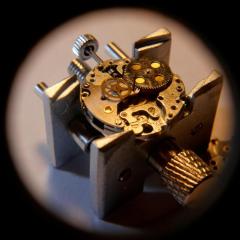Omega 552 servicing notes
-
Recently Browsing
- No registered users viewing this page.
-
Topics
-
Posts
-
Than you so much for taking the time to write such a detailed and informative post. It really helps. So, another question: With the Etachron system the stud pushes into the carrier but the angle on the vertical plane of the stud is based on the carrier arm. I expected it to be flat but I have seen some movements where it is bent slight down meaning the stud is pointing slightly inward at the bottom and the spring leaving the stud is affected. Is this something that is done at the factory to flatten the spring? I played around with manipulating the spring vertical angle as it leaves the stud and it has a significant effect on how it goes through the pins and also the angle of the coils on the other side of the balance. I can flatten the spring by adjusting the angle it leaves the stud. Now I know the NH35 is a mass produced movement so not the best quality but is the stud vertical angle ever manipulated to flatten the spring?
-
Because the water is very hard with calcium where I live, and I saw that on a youtube demo 🤔... Maybe it's unnecessary...
-
Yes, the t-rest hight is not critical when using this method.
-
Just received today: For only ~60$ * (*) ~140$ with shipping and custom fees. 3.80 Kg The pressure should be able to reach up to 6 bars. The glass is thick The closing system seems to be sturdy. The plunger lever(?) and the valve: The plunger lever locking system (I will make a notch on top to note the opening position): I put 3 bars at let it for 20 minutes, the pressure didn't leaked at all. Next steps: Quick wash, maybe put some silicone grease on the seal of the lid ? First test I'll do: Put deionized water til the red line Put a diver case in the tank, keep it outside the water Pump (10 ~ 20 times?) to reach 3 bars (0.3MPa) Wait at least 1 minute Dip the case into the water Gently release the pressure and observe To be continued... All comments are welcome
-






Recommended Posts